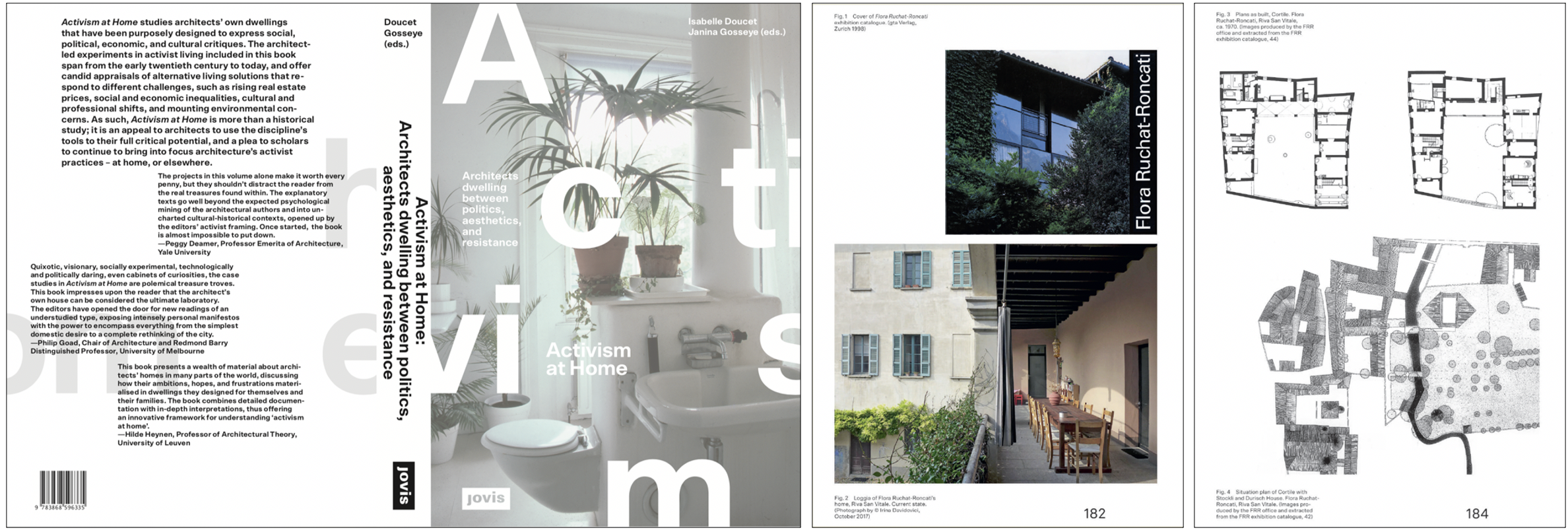
In the chapter “Domesticity and Public Live”, Irina Davidovici and Eliana Perotti assess the converted historic farmhouse that is located on the boundary of Riva San Vitale and has been built between the 12th and 18th centuries. Following the purchase in 1967, Ruchat-Roncati transformed and extended it in a series of phases over several decades. Along individual alterations that oscillate between careful conservation and independent interventions, the two authors describe not only the physical advancement of the old farmstead, but also trace Ruchat-Roncati's tightly entangled spheres of life and work.

Isabelle Doucet and Janina Gosseye (eds.), Activism at Home: Architects dwelling between politics, aesthetics, and resistance, Berlin: Jovis, 2021.
Images:
Isabelle Doucet and Janina Gosseye (ed.), Activism at Home, Berlin 2021, Cover and single pages.
Flora Ruchat-Roncati, Stöckli, Riva San Vitale, ca. 1965. (Photo Detlef Leinweber)
